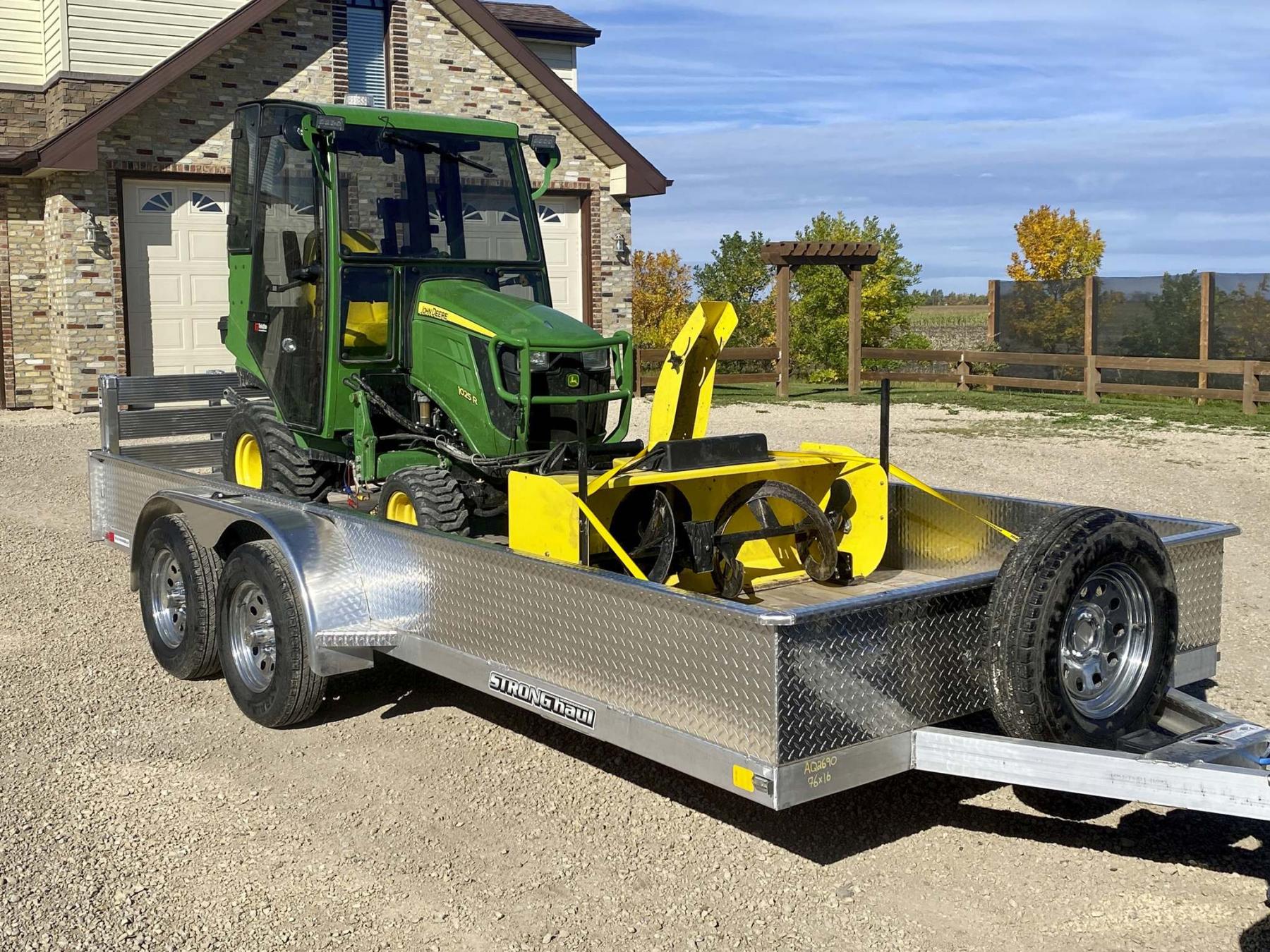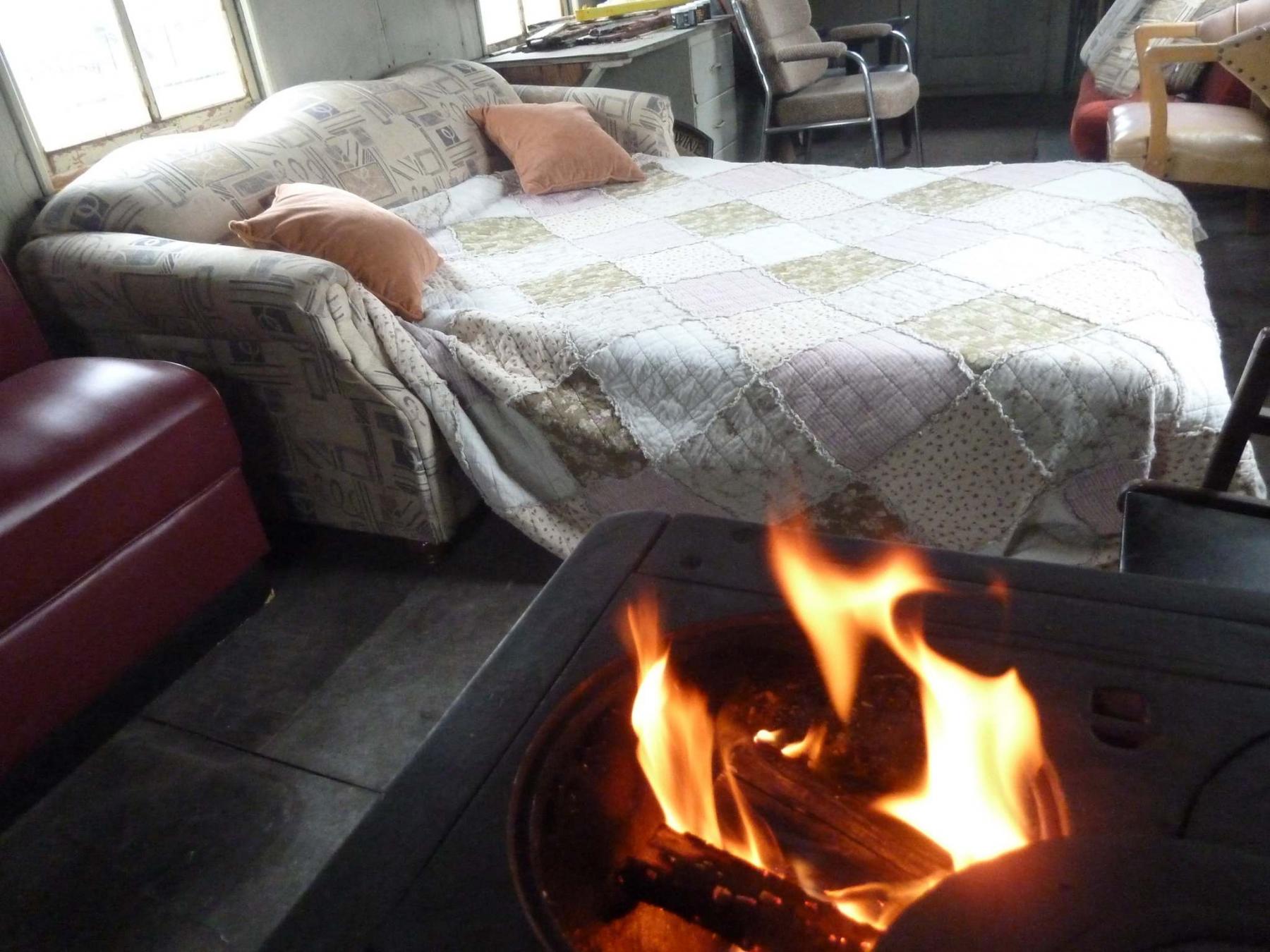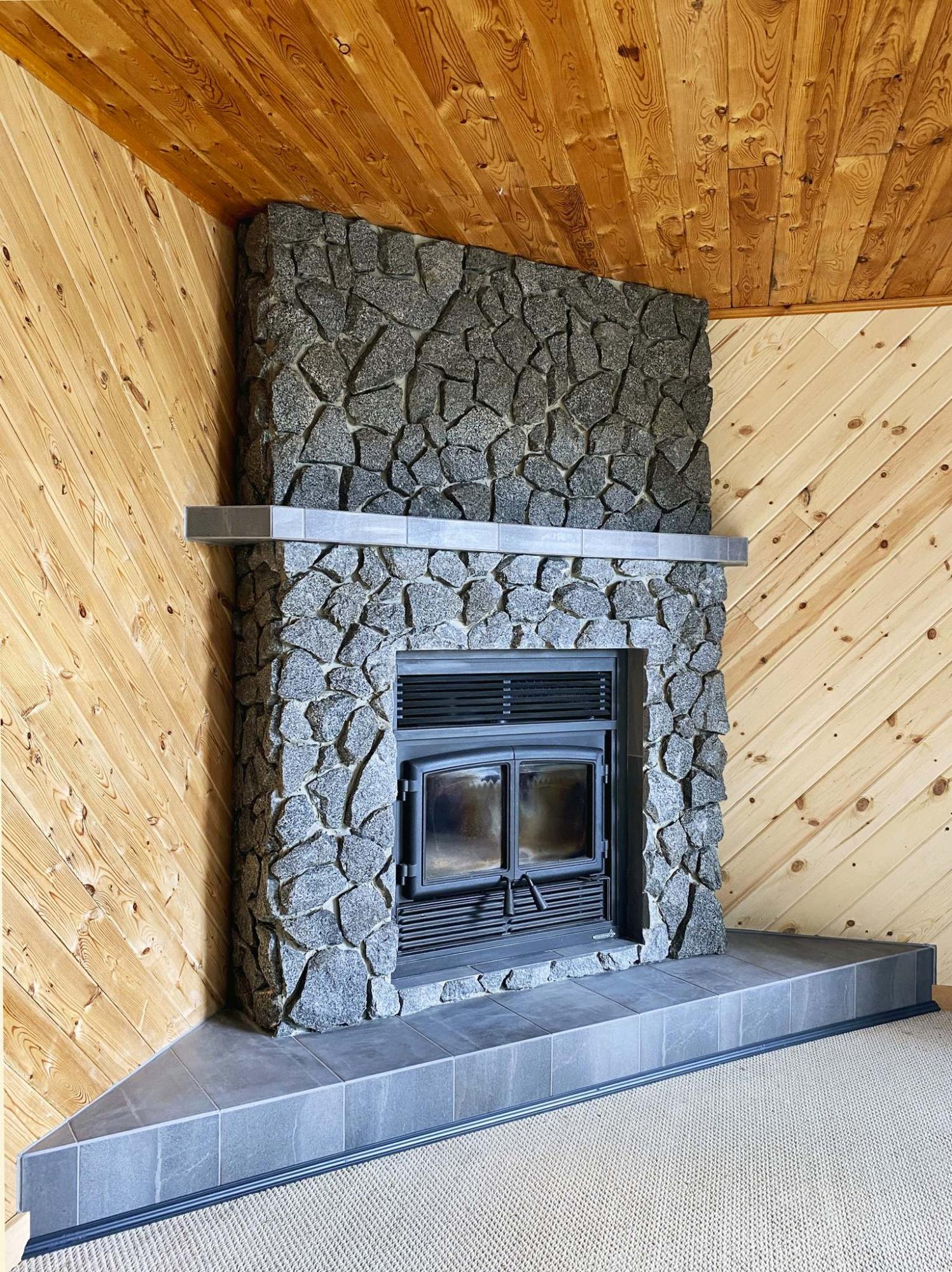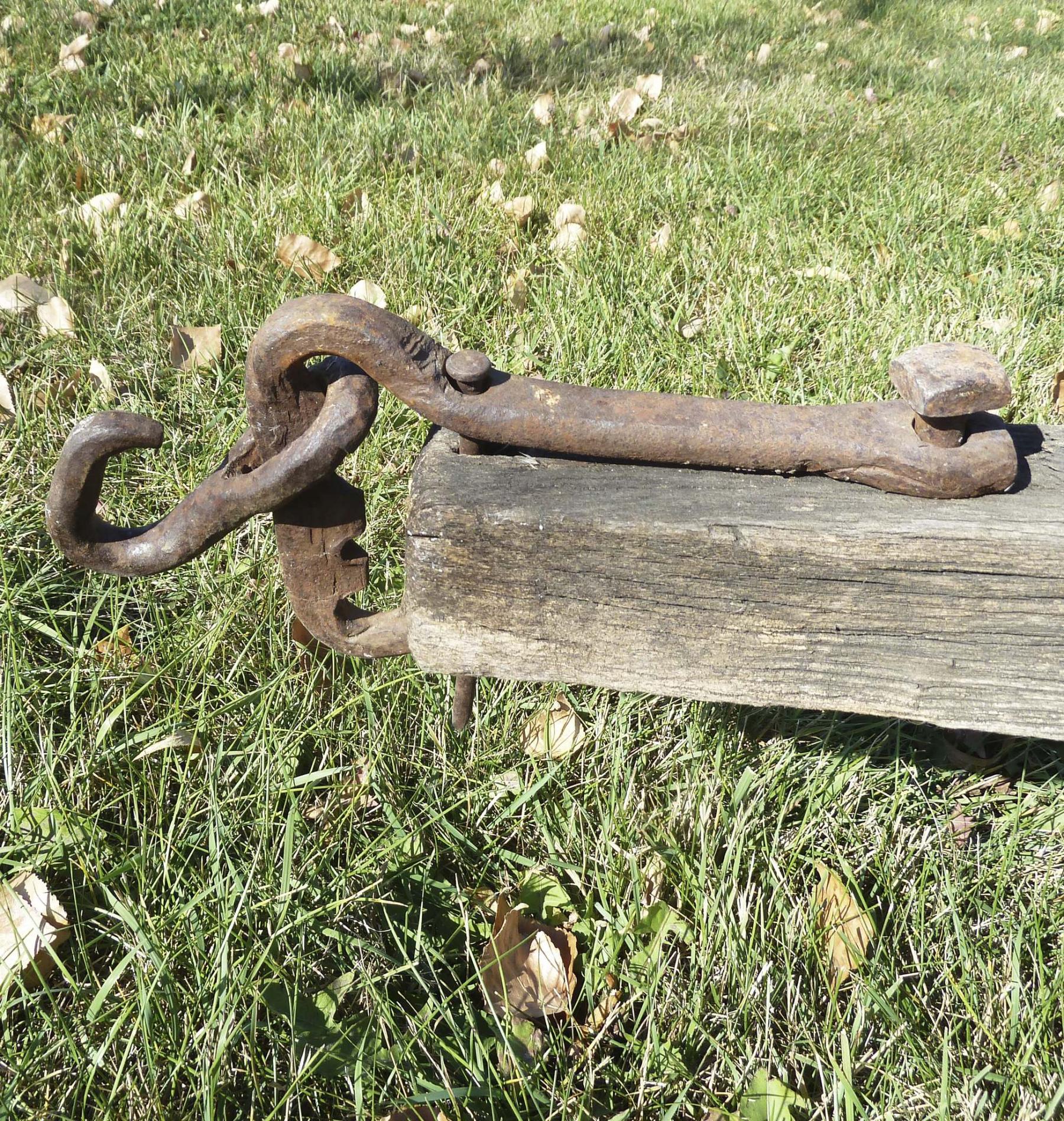Renovation & Design
Renovation & Design
Get your hard-boiled eggs cracking
Question: I make my own hard-boiled eggs. Lately, when I try to peel them, it just turns into a mess. Large chunks of the egg white stick to the shell, the membrane sticks to the egg white, and it just doesn’t peel cleanly. What am I doing wrong? How can I get perfect (or nearly perfect) hard-boiled eggs? If you can help, I would be very grateful. Thanks. — John
Answer: Here are a few tips for making hard-boiled eggs easier to peel. Note: The fresher the egg, the more difficult it is to peel because the egg whites hold more firmly to the inner membrane.
Add a small amount of vegetable oil to the pot while boiling eggs. The shells absorb just enough of the oil so the shells slide off easier.
After boiling eggs, empty all of the hot water and fill the pan with cold water. Add two bowls of ice and let the eggs sit in the ice water for 10 minutes before peeling.
Take an egg in your hand and smash it on the table, then roll it back and forth like a rolling pin. This makes the shell peel off more easily.
Alternatively, try using a spoon and hit the egg all over so it cracks everywhere. Then, turn the spoon around and slip the tip under a piece of the shell, slide it around the entire egg. Rinse off any remaining shell.
Question: I want to clean my ceiling fan, but I keep putting it off because it is my least favourite job. Any tips to make it easier? Thanks. — Kelly
Answer: For regular ceiling fan cleaning, you can use a good quality long-handled microfibre dust cloth. If you clean your ceiling fan once every one to two weeks, then when you turn the fan on, less dust flies around the room and settles on other parts of the room or on your furniture. However, when grease and dust have built up to the point of becoming gummy and sticky, more drastic measures need to taken. You will need a step ladder, a gallon bucket of water, abrasive non-scratching cloth, and 1 tbsp. each of dish soap and vinegar. With the fan off (obviously), scrub each blade of the fan using the solution. Rinse with warm water and dry. To prevent ceiling fan blades from collecting dust, you can wipe them with furniture polish and a soft cloth — or a fabric softener sheet.
Feedback from Friendly Manitobans
— Avoiding food wastage: My wife, Linda, and I have found three-litre boxes of wine have almost a full glass left after the spigot has stopped pouring. That’s eight or nine per cent — about three bucks worth! Rob
— After purchasing berries, I remove them from the plastic carton. Then I wash them and place a paper towel onto the bottom of the carton. Place the berries back into the carton. The towel absorbs excess moisture which keeps the berries fresher longer. Margret
— I hear so many people talk about scrubbing their kitchen cupboards with all kinds of products. All you really need is dish soap and water. Scrub and rinse; the grease will disappear. Rhinold
— To make homemade pizza crispy, make sure to heat the empty pan in the oven at 450 F for about 10 minutes. Prepare your pizza on parchment paper, and then transfer it onto the hot pan. Skipping this step will result in a soggy pizza. Tony
Note: Every user assumes all risks of injury or damage resulting from the implementation of any suggestions in this column. Test all products/methods on an inconspicuous area first.
Reena Nerbas is a popular motivational presenter for large and small groups; check out her website: reena.ca. Email your tips and questions.
info@reena.ca
Renovation & Design
Proper vents, soffits key to winter attic airflow
Question: I have a second home north of Montreal, on the slope of a moderately sized mountain. About 19 years ago, we had the roof shingles redone, and the contractor at the time replaced our ridge vents with three regular roof vents. We call them "Maximums," here in Quebec, which is actually the brand name. Since then, we’ve been having real ventilation issues, creating lots of ice dams, and have leaks into several walls. The biggest problem occurs above a cathedral ceiling for the living room. We never had these issues prior to the change, even after we replaced the insulation in the attic. We have clear soffits all along the roof edges.
We’ve consulted several "experts" and get conflicting advice. After reading one of your pieces online, I can only conclude that we should have left the ridge vents in place. Would that seem to make sense to you? I actually noticed today that all the houses in a new residential development nearby have only ridge vents, which I’ve actually never seen before in houses without cathedral roofs. Are ridge vents also a new trend?
I would be delighted to get your take on this issue, if you don’t mind. Many thanks for any counsel and guidance you might be able to provide.
David Allnutt, Montreal
Answer: Installing proper ventilation for the appropriate roof system may be critical in prevention of condensation and moisture issues. Ridge vents are ideally suited for a vaulted ceiling, and in combination with continuous soffit vents, may help prevent the problems you are facing.
Ridge vents are long, thin, continuous vents typically made of aluminum or plastic. These are so named because they are designed to be installed at the very peak of a sloped roof. While the metal ones have all but been replaced by newer plastic models, they are still used on many newer homes. To function correctly, these long vents must be installed properly, at the very top of the roof, with the cap shingles partially covering the top of the vent. If they are not properly installed, they may allow blown rain and snow to enter the attic, or easily freeze up in cold weather.
For a conventional gable or hip style roof, with a pitch steeper than 3/12, ridge vents are not necessary, except in unusual circumstances. The newer builders may be installing them because they are less visible that standard vents, which may be an esthetic decision. Typical rectangular vents, spaced accordingly, may provide better ventilation with much lower cost. These standard vents stick up above the shingles more, so may provide better protection from snow and ice blockage. A continuous ridge vent is more likely to become frozen and ineffective in that style of common roof. For a vaulted roof system, the continuous vent at the peak is the correct choice.
For a proper roof system or attic ventilation, cold air should enter the attic or vented space from the bottom. That is normally accomplished with enough soffit vents, which have many small perforations for this purpose. The idea is that in very cold weather, outside air will be drawn in to the attic or roof cavity from this area, which will warm slightly. If warm air is leaking into this space from the heated living area below, it will mix with the soffit air, which will help force that air out the top of the attic or ceiling cavity by convection. The influx of colder air at the bottom of roof system will help create a "stack effect," which passively forces the house air out of the upper attic vents, as it rises. If there is limited or no air coming in at the soffits, the warm air leaking into this space from the house may cool too much before it can be forced out the higher vents. It can then condense on the cold underside of the roof sheathing and framing members, freeze and allow frost to build up. In warmer weather, this will melt and wet the insulation and/or drip into the ceiling below.
For a typical attic, a few properly spaced soffit vents on each side of the house, or continuous, perforated metal soffits, will serve this purpose well. Installing a few standard roof vents near the highest point of the attic will complete the system, as long as there is enough room above the insulation for proper circulation. For a vaulted ceiling, like your cathedral section, the attic space may be limited to only a few centimetres above the insulation. In that situation, it is critical to ensure that both the soffit and roof vents are continuous. Since there is only a small air space in that type of roof system, every one of the cavities must be provided with ventilation at the top and bottom. If not, these small cavities may be filled with warm house air, which cannot circulate out, due to the missing vents. It may easily condense in the small airspaces, and also melt the snow above, while it cools. The melted snow will drain down the shingles during the warm part of the day, and freeze when it hits the colder roof above the unheated soffits. This may reoccur day after day, causing the ice dams you have experienced.
Reinstalling ridge vents at the time of a roofing upgrade is the right move and should allow proper ventilation of the vaulted portion of your roof system. This will prevent condensation, ice dams and leakage. They may not be necessary on other areas of your roof if you have conventional attics in those spaces, even though they may be on all the trendy new homes nearby.
Ari Marantz is the owner of Trained Eye Home Inspection Ltd. and a Registered Home Inspector (RHI)(cahpi.ca). Questions can be emailed to the address below. Ari can be reached at 204-291-5358 or check out his website at trainedeye.ca.
trainedeye@iname.com
Renovation & Design
Home inspections benefit both buyer and seller
Question: I was wondering what your advice is regarding home inspections. I know right now it’s a real seller’s market and people are very reluctant to say they want an inspection before closing, for fear of loosing the home they are attempting to buy. Any comment on this would be appreciated.
Bob B.
Answer: Forgoing the inclusion of a home inspection clause in a typical offer to purchase of a home can be a poor decision, even in a hot seller’s market. That choice may not prevent buying a home with serious and costly issues, but also prevent you from learning a great deal about your future home.
I don’t know how many times I have been asked your question in the last couple of years, by friends, potential clients, family, and almost anyone I talk to. It seems that the combination of the COVID pandemic, historically low mortgage rates, and the lack of homes for sale have created a trifecta of conditions conducive to a scorching hot real estate market for resale homes. Some people assume home inspectors may follow the lead of bankers and realtors, with very increased business during this time. Unfortunately, the lack of conditions included in offers is severely restricting the inspection side of the equation. Many buyers are choosing to inspect a home prior to making an offer, but that can become difficult with limited time due to fixed offer dates. Past COVID restrictions on gathering sizes also didn’t help.
The various theories I have heard for the busy market starts with many people wanting to move out of their small apartments or homes, because that is now also their workplace. In that same vein, many people did not venture far from home until recently, so the inventory of homes for sale was very low. Older homeowners that would typically move to a condominium, apartment, or assisted living facility appear to be staying longer in their homes. Also, lending institutions competing for business are offering long-term mortgages with extremely low rates, which is very appealing to first-time buyers and others looking for a bigger house. These, combined with not much to do during the extended pandemic, has led to this situation.
Many potential homebuyers have done all the right things in their due diligence prior to purchasing, only to become very frustrated when their offers are repeatedly not accepted. Many sellers, wanting to ensure a completed offer when they accept, are disregarding those that contain any conditions which may cause the deal to later be withdrawn. The two most common of these are financing and home inspection. So, buyers are swaying toward clean offers, even above those that may be higher in price. In that situation, those offers conditional on a satisfactory home inspection are being discarded.
Exclusion of a pre-purchase home inspection may seem like it is only negatively affecting the buyer, but it can also have adverse effects on the seller, as well. The best outcome of a home selling transaction is when the buyer is aware of the true condition of the property and they pay fair market value. This is obviously beneficial for the purchaser, but also favours the seller, as well. When a home is sold and the buyer becomes aware of issues in need of immediate attention after possession, they can feel duped by the seller, especially if they feel they paid too much. Even if some items were in the property disclosure statement prior to selling, others may not have been thought of as critical by the seller and not included. An air-conditioner that was not working, because the elderly seller never turned it on as it made the home too cool, is one common example. They would not have even known it was damaged, but that would have been tested and discovered as part of a standard inspection.
There are many other examples of items of that nature, which sellers don’t regard as defects, that would be discovered and identified by a competent home inspector in a pre-purchase review. Many of these would not be significant enough for the potential buyer to withdraw their offer, but it would allow them to budget for remediation after moving in. Knowing all that information, ahead of time, would prevent ill feeling toward the seller and could prevent a potential lawsuit. No seller wants the people that just bought their home to take them to court, so preventing that is very important. If the buyers hire a Registered Home Inspector (RHI) to complete a visual inspection, with written report, prior to closing they will be made aware of any potential pitfalls. They are then much more knowledgeable about the home’s condition and not able to claim ignorance about problems, afterward. That protects the seller just as much as the buyer and reduces the risk of nuisance lawsuits by new homeowners.
So, how do you avoid this all too common recent phenomenon when looking to buy? The best way is still to include the inspection condition in your offer and otherwise sweeten the deal with other details. Offering a little higher price is the most straightforward way to make the offer more palatable. Taking possession of the home at a time more conducive to the seller may be another option. Including a larger deposit with the offer is another way of showing the seriousness of your intentions, which can also help sway the sellers. Otherwise, doing a complete home inspection before making an offer, if possible, will still allow you to be properly informed.
Waiving the inclusion of a home inspection condition in your offer to purchase of a home may be the norm rather the exception in the current market, but doing so is not beneficial for those on both sides of the transaction. It will not only prevent you from learning the true condition of the home, but could lead to bad feelings and potential lawsuits for the sellers, as well.
Ari Marantz is the owner of Trained Eye Home Inspection Ltd. and a Registered Home Inspector (RHI)(cahpi.ca). Questions can be emailed to the address below. Ari can be reached at 204-291-5358 or check out his website at trainedeye.ca.
trainedeye@iname.com
Renovation & Design
Colour safe bleach keeps fabrics bright and fresh looking
Question: What is the difference between bleach and colour safe bleach? My socks look dingy after I play soccer. How can I keep my white and orange socks looking new? — Cathy
Answer: Colour safe bleach is made using hydrogen peroxide while bleach is made using sodium hypochlorite. Colour safe bleach is the easiest method for keeping coloured fabrics bright and fresh looking, without damaging the colour.
Question: What is the secret that hotels use for keeping their towels white? — Cathy
Answer: While not all hotels subscribe to the same practice in cleaning towels, the following is common among many. They begin by treating all stains using stain remover, if the stain disappears the towels move on to the next stage. Some hotels soak the towels in a solution of a half-cup of baking soda, half-cup of laundry detergent and enough cold water to cover the towels. Other hotels use a combination of cold water and bleach. Finally, the towels are transferred into a washing machine and washed using warm water. An important rule is not to overstuff the machine so that all fabrics have room to swim. Washing soda or borax are also options for pre-treatment. When fabric softener is not used, vinegar is often an alternative.
Question: What is the fastest way to peel potatoes? — Syd
Answer: Like me, you may not have access to a commercial potato peeler, but don’t be too upset because they are a pain to clean after use. Here is a method that does not require extra purchases. Use a sharp knife to score the skin/peel of each potato around the middle. Leaving the skins on, boil the potatoes in water until cooked. Drain the potatoes and transfer them into a bowl of ice water. Use clean rubber gloves to pull the skin off the potato. Depending on how you are preparing the potatoes, you may want to boil them once more to heat them.
Question: How can I clean spider webs off of the light fixtures in my backyard? Thank you, Joanne
Answer: The swish of a broom is an easy way to remove webs because brooms are small and easy to store nearby. A shop vacuum is another option. Even though you get rid of the web, it won’t prevent them from rebuilding.
Question: What is the easiest way to ice cupcakes if you don’t have piping bags or frosting tips? — Braya
Answer: Make sure that your icing is not runny. Use a retractable ice cream scooper or melon baller to portion the icing. Scoop, plop and smooth. Done in seconds, and every cupcake will have an equal amount of icing. Don’t forget the sprinkles!
Manitoba tips — keep ’em coming!
— To prepare meatballs all the same size, roll the mince into a log, slice off pieces of equal size and roll with your hands. — Anonymous Winnipegger
— I hate wasting food, so when I finish a product sold in plastic containers (mayonnaise, peanut butter, mustard, ketchup, jam, etc.), I cut the container opener using a carpet cutter (watch your fingers). I cut them open at the mouth and scoop out the rest with a spatula. You’ll be surprised at the quantity you would have thrown away. I also cut toothpaste tubes open using scissors and find enough paste for several days. — Anonymous Winnipegger
— I use heavy-duty Velcro strips to prevent my bathmat from slipping. I can’t risk another fall, and this handy hint gives my confidence that the mat won’t move. — Robert
Note: Every user assumes all risks of injury or damage resulting from the implementation of any suggestions in this column. Test all products on an inconspicuous area first.
Reena Nerbas is a popular motivational presenter for large and small groups; check out her website: reena.ca. Email your tips and questions.
info@reena.ca.







